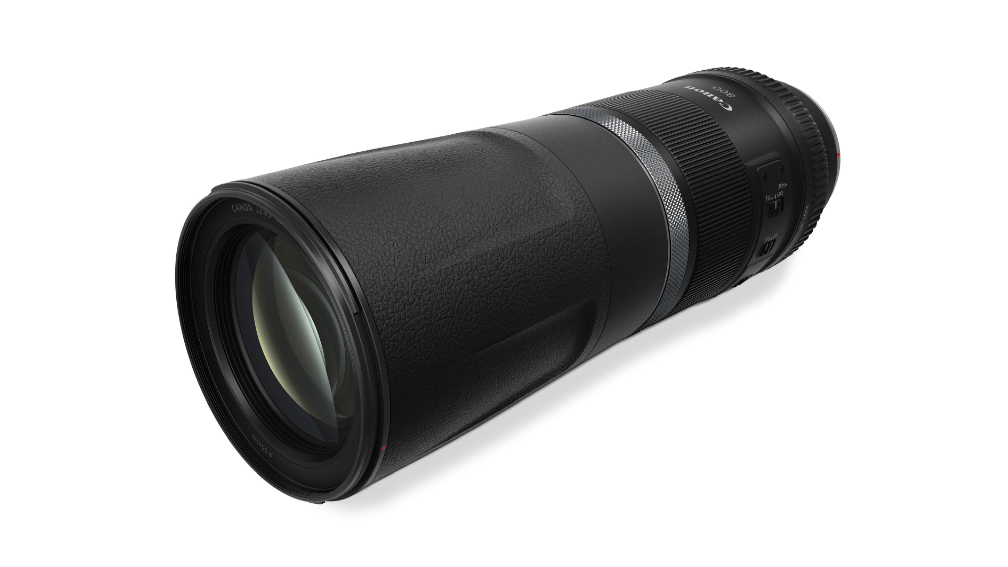Super-Telephoto Lens That Fits in Your Regular Camera Bag
Review by Fernando Santos
When Canon announced the RF800mm F11 IS STM lens I thought, “What! a fixed F11 lens! Who wants such a thing?” If you ask yourself the same question, keep reading to learn why, just like me, you may change your mind and end up with one in your camera bag.
Let’s start with the basics: This is an 800mm super-telephoto lens with a price tag of $999.99; it’s an 800mm lens that fits into 11.1″ (282mm); and it’s an 800mm lens that’s super light at just 2.77 lbs (1260g). Compare that to the Canon EF 800mm F5.6L IS USM, which weighs 9.9 pounds (4500g) and is 18.1″ (461mm) long. Well, the EF lens is an F5.6 L series, but those extra two stops of light (among other features) will cost you $12,999, which makes it impossible for most people to buy. The RF 800mm price tag includes just the lens; the lens hood and lens case are optional. You may want to order a spare lens cap (model E-95), because at 95mm diameter, you probably don’t have one. I suggest you also get the ET-101 lens hood ($68).
The lens has an unusual collapsible design, and you may not even notice the lens is collapsed until you turn on your camera with the lens attached and see this message: “Set the lens to the shooting position.” Just twist the locking ring to unlock, expand the lens barrel, and lock it again. You’re now in the shooting position. The length will expand by almost 3″. Collapse it back to pack it, and you’ll see how small it becomes: I was able to fit my Canon R6 with the RF800mm F11 attached, inside the PhotoCross 13 or the TurnStyle 20 V2 sling bags by ThinkTank. None is the ideal bag for that setup, but it does fit. I had no problem fitting it into any of my other regular-sized camera bags, either.

Another unusual feature on this lens is the fixed F11 aperture. You may think it’s too slow, and you won’t be able to use autofocus; but you will! You may think those beautiful, blurred backgrounds aren’t possible at F11. Well, they are! It really depends on the distance between you, your subject, and the background. The lens minimum focusing distance of this Canon RF800 is 19.69′ (6.0m), which shouldn’t be a problem most of the time. At that distance, an 800mm F11 lens gives you a shallow 1.75″ (4cm) depth of field, so you can have soft blurred backgrounds.
Canon had to make some compromises for this lens, however; the most important of which is the autofocus area. Instead of having the whole frame edge-to-edge, you have a square area in the middle that takes around 25% of the total area. Within that area, autofocus works great; but you may feel somehow limited. I didn’t have any problems with eye tracking, even with birds. I was able to get sharp images, even just handholding my setup. The lens image stabilization (IS) works together with your in-body image stabilization (IBIS). Canon says “up to 4 stops with the Canon EOS R” which doesn’t even have IBIS. With the EOS R5/R6, you should be able to get an additional stop.
One thing that may disappoint users is the lack of a tripod collar. The lens has a 1/4″ thread to attach a plate and mount it on your tripod head, but because it’s not a ring-type attachment, you won’t be able to quickly rotate between landscape and portrait orientation, particularly on a gimbal. On the positive side, you can use this lens with the RF1.4x and RF2x Extenders. You’ll get a 1120mm/1600mm lens, at F16 or F22 respectively and, believe it or not, autofocus will still work.
I found the Canon RF800mm F11 STM very comfortable to use and the results you can get are worth the affordable price tag. Don’t worry about the fixed F11 aperture; it’s not as limiting as you may think. If you enjoy telephoto lenses, you don’t want to miss this one. It fits inside your regular camera bag, and it will not break your bank account nor your back. ■






